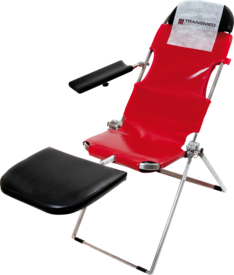Recently, there has been a remarkable shift in the use of irradiaters, particularly in blood banks, agriculture, and research facilities. This transition aims to replace nuclear irradiaters with the more advanced (x-ray) irradiaters. The emergence of this trend is closely tied to the efforts of the Nuclear Threat Initiative (NTI), an organization devoted to enhancing the quality of life in the face of the mounting risk of catastrophic attacks involving weapons of mass destruction and disruption (WMDD) such as nuclear, biological, radiological, chemical, and cyber threats.
NTI, founded in 2001 by former U.S. Senator Sam Nunn and philanthropist Ted Turner, operates under the guidance of a prestigious international board of directors and is led by its dedicated president, Joan Rohlfing. The primary objective of NTI is to address the global challenges posed by WMDD and mitigate their potential devastating impacts on present and future generations.
One of the critical reasons behind the shift towards (x-ray) irradiaters is their non-nuclear nature, making it virtually impossible to construct a dirty bomb using them. Consequently, facilities are opting to adopt these advanced irradiaters, although their acquisition costs can reach upwards of a million dollars, not to mention the additional expenses related to the removal of the old nuclear irradiaters.
The benefits of the newer (x-ray) irradiaters are numerous. Unlike their nuclear predecessors, they do not require a secure room equipped with fingerprint access and surveillance cameras, thus saving valuable lab space. This eliminates the need for stringent background checks on all individuals accessing the secured room. Additionally, with the incorporation of intranet technology, technicians no longer need to rely on manual paper logs to record the units that have been irradiated. They can simply scan the unit, and the system automatically records the whole blood number, streamlining the process. Not only does this improve efficiency, but it also eliminates the need for daily quality control procedures. Furthermore, the capacity of the newer (x-ray) irradiaters is larger since they feature six canisters as opposed to the single large canister found in the previous models.
However, it is important to note that there is one minor drawback to the newer (x-ray) irradiaters. If the machine remains unused for an extended period, it requires conditioning. This involves initiating the machine in condition mode and allowing it to run for approximately 12 minutes. While this may be a slight inconvenience, it does not outweigh the numerous advantages offered by the newer irradiaters.
In conclusion, the transition to the contemporary (x-ray) irradiaters presents several significant advantages across various sectors. The enhanced security and safety measures, technological advancements, increased capacity, and improved efficiency make it a compelling choice for facilities seeking to upgrade their irradiation systems. By embracing these innovations, we can pave the way for a safer and more efficient future in the face of evolving global challenges.


